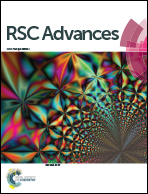Li-ion storage in morphology tailored porous hollow Cu2O nanospheres fabricated by Ostwald ripening
Abstract
Uniform Cu2O nanospheres with tailored hollow structure are successfully synthesized by employing the Ostwald ripening approach, and used as anodes in Li-ion battery. The synthesis involved a facile room-temperature chemical reaction of cupric nitrate with hydrazine. Hydrazine served as an alkali and reducing agent, converting Cu2+ to Cu2O nanoparticles, which self-assembled due to their large interfacial energy and formed 100–400 nm nanospheres. The Cu2O nanospheres were characterized by SEM, TEM, XRD, UV-vis spectroscopy and BET techniques. These Cu2O nanospheres were comprised of a mesoporous shell (20–50 nm) and a hollow interior part (50–100 nm). Galvanostatic charge–discharge measurements at different current densities, slow scan cyclic voltammetry (CV) and impedance measurements were used to analyze the electrochemical performance of the Cu2O nanospheres. The hollow Cu2O nanospheres exhibited a capacity of ∼650 mA h g−1 at 100 mA g−1 current density, showing greater than 80% capacity retention after 100 cycles. The enhanced electrode performance is attributed to the mesoporous hollow nanostructure that ensured an increased number of electrochemical sites, shorter Li ion diffusion lengths facilitating fast electrochemical kinetics, and sufficient void spaces to buffer the volume expansion.


 Please wait while we load your content...
Please wait while we load your content...